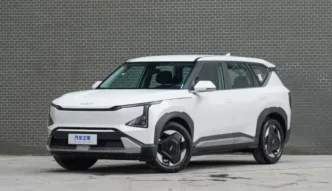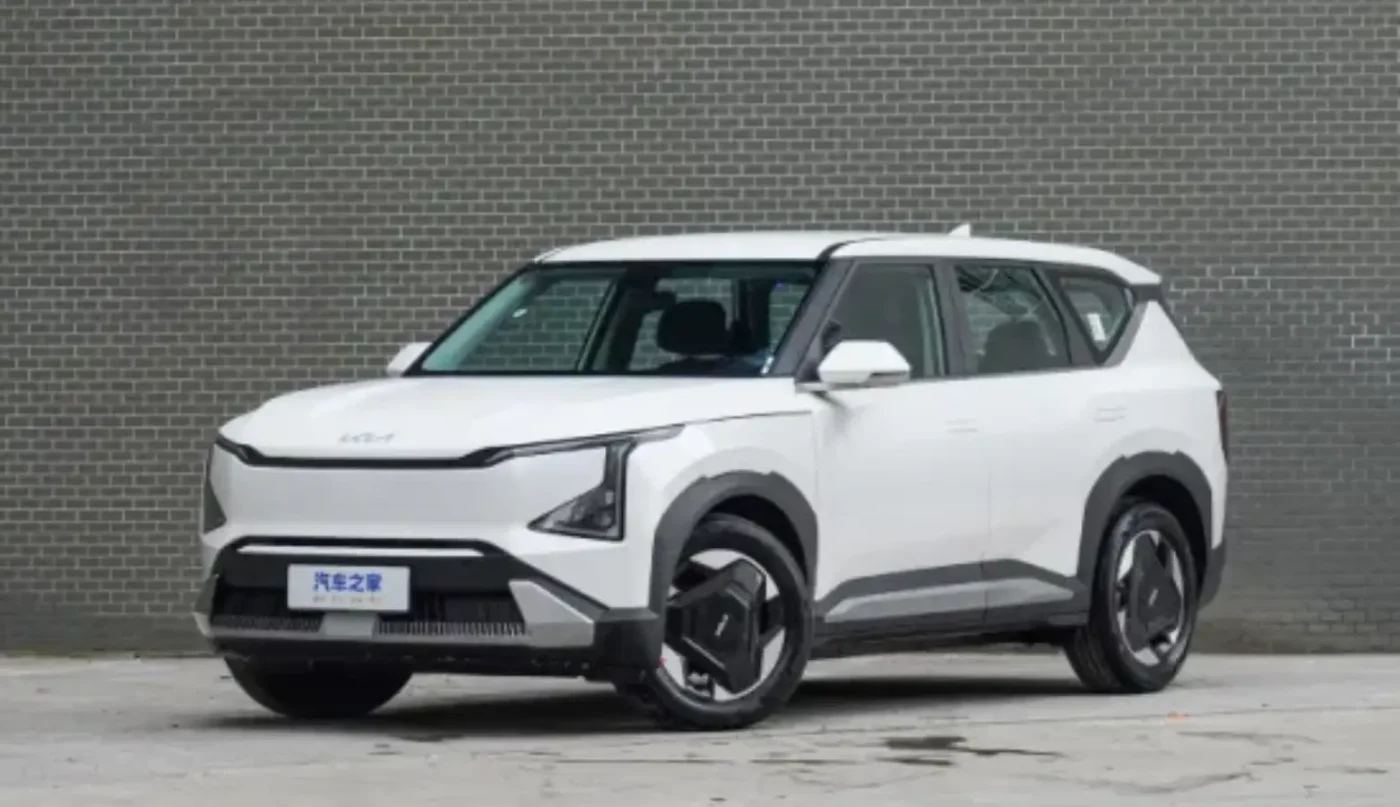In a significant step for Singapore’s burgeoning electric vehicle (EV) industry, the Kia EV5, a five-seat sport utility vehicle, has rolled out as the first Kia model to be assembled locally and sold exclusively in the city-state. Unveiled on May 29, 2025, at the Hyundai Motor Group Innovation Centre (HMGICS) in the Jurong Innovation District, the launch underscores Singapore’s strategic position as a hub for automotive innovation in the region.
A Milestone for Local Assembly
The Kia EV5, distributed by Cycle & Carriage, was first previewed at the Singapore Motorshow in January 2025. Now on the market, it joins a select group of EVs assembled at HMGICS, including the Hyundai Ioniq 5 and Ioniq 6. Unlike its counterparts, however, the EV5 will not be exported, reflecting a tailored approach to meet local demand. The assembly process, which takes approximately seven hours per vehicle, relies heavily on automation, with around 67 percent of tasks handled by some 200 robots, according to Dr. Hyun Sung Park, chief executive of HMGICS.
The South Korean conglomerate Hyundai Motor Group, which owns both Hyundai and Kia, has positioned HMGICS as a testing ground for cutting-edge manufacturing since it began operations in 2023. With a potential annual production capacity of 30,000 EVs, the facility operates on a demand-driven model, producing vehicles as orders come in with a small buffer to reduce customer waiting times. A spokesperson for HMGICS emphasized that large-scale production is not the primary goal. “Our main focus remains to be serving as a global innovation hub for Hyundai Motor Group” they said.
Technical Specifications and Market Positioning
The Kia EV5 is designed to compete in Singapore’s premium EV segment, offering three variants to cater to different consumer needs. Two versions, with a power output of 100kW, qualify for a Category A certificate of entitlement (COE), a crucial factor in Singapore’s tightly regulated vehicle ownership system. The third variant, boasting a 230kW output, falls under Category B. With an operating range of 400 to 540 kilometers on a full charge, the EV5 is priced from $194,000, inclusive of COE, positioning it as a competitor to models like the Tesla Model Y and Hyundai Ioniq 5, though slightly smaller in overall dimensions.
Singapore’s EV market, while still nascent compared to global leaders, is growing steadily. Data from the Land Transport Authority reveals that Hyundai registered 708 EVs in 2024, a marginal increase from 693 in 2023, encompassing both locally assembled models like the Ioniq 5 and 6 and imported units. Kia, on the other hand, saw a slight dip, with 48 EVs registered in 2024 compared to 53 the previous year. The introduction of the EV5 could bolster Kia’s presence in this competitive landscape, particularly as the government pushes for greener transport solutions through incentives and infrastructure development.
Strategic Importance for Kia and Singapore
For Kia, the EV5 launch represents more than just a new model introduction; it is a marker of the brand’s broader ambitions. Kevin Ahn, president and chief executive of Kia Asia Pacific, described the event as a significant milestone. Globally, Kia aims to sell 4.2 million EVs by 2030, a target that reflects the accelerating shift toward sustainable mobility. In 2024, the South Korean brand delivered 3.1 million vehicles worldwide, combining EVs and traditional combustion engine models. Localizing production in Singapore, even on a limited scale, aligns with this vision by tapping into a market known for its high purchasing power and progressive environmental policies.
For Singapore, the HMGICS facility is a cornerstone of its broader industrial strategy. The Jurong Innovation District, where the plant is located, is envisioned as a nexus for advanced manufacturing and research. Assembling high-tech vehicles like the EV5 locally not only boosts economic activity but also positions Singapore as a leader in the regional EV ecosystem. Unlike the Hyundai Ioniq 5 robotaxi, which is assembled at HMGICS but exported to the US, the EV5’s exclusivity to the domestic market signals confidence in local demand and the city-state’s role as a testbed for innovation.
Challenges and Opportunities in the EV Market
Despite the optimism surrounding the EV5 launch, challenges remain. Singapore’s EV adoption rate, while growing, is constrained by high costs and limited land for extensive charging infrastructure. The price point of the EV5, starting at $194,000 with COE, places it out of reach for many potential buyers, even with government rebates for electric vehicles. Moreover, the COE system, which regulates vehicle ownership through a bidding process, adds an additional layer of expense and uncertainty for consumers.
On the supply side, HMGICS’s demand-driven production model, while efficient, limits scalability. The spokesperson’s reluctance to disclose specific output figures suggests that market fluctuations could impact the plant’s operations. If demand for the EV5 exceeds expectations, supply chain bottlenecks or production delays could pose risks. Conversely, underwhelming sales could raise questions about the viability of localized assembly for niche markets.
Yet, opportunities abound. Singapore’s commitment to achieving net-zero emissions by 2050 aligns with the global push for electrification. The government has set ambitious targets to phase out internal combustion engine vehicles by 2040, supported by plans to expand the EV charging network to 60,000 points by 2030. For manufacturers like Kia and Hyundai, this creates a fertile ground to test and refine EV technologies. The HMGICS facility, with its focus on innovation over volume, could serve as a blueprint for similar hubs in other compact, high-density markets across Asia.
Regional and Global Implications
The Kia EV5 launch also carries implications beyond Singapore’s borders. South Korea’s automotive giants, Hyundai and Kia, are increasingly looking to Southeast Asia as a growth frontier for EVs, where urbanization and rising incomes are driving demand for personal mobility. While Singapore’s market is small in absolute terms, its role as a regional influencer—through trade, technology, and policy—cannot be understated. Successful adoption of the EV5 could pave the way for similar localized production models in neighboring countries like Malaysia or Thailand, where Hyundai and Kia already have a presence.
Globally, the EV5 fits into a broader narrative of competition and collaboration in the EV space. As Tesla continues to dominate headlines with its aggressive pricing and innovation, traditional automakers like Kia are leveraging partnerships and localized strategies to carve out market share. Hyundai Motor Group’s dual-brand approach—offering distinct yet complementary models under Hyundai and Kia—mirrors strategies seen in other industries, where differentiation within a conglomerate maximizes reach. Whether this will translate into sustained growth in Singapore remains to be seen, especially as Chinese EV manufacturers like BYD intensify their push into Southeast Asia with lower-cost alternatives.
A Step Toward a Sustainable Future
The arrival of the Kia EV5 is a small but symbolic win for Singapore’s aspirations to lead in sustainable innovation. It reflects a confluence of corporate ambition, government policy, and consumer readiness to embrace electric mobility, even if on a limited scale. As the city-state navigates the complexities of urban transport and environmental goals, each new EV on its roads represents a step closer to a greener future. Whether the EV5 will accelerate this journey—or remain a niche offering in a high-cost market—is a question that only time will answer.
















